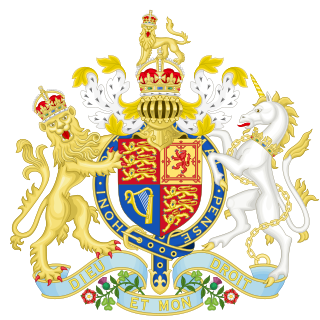Related Research Articles

A copyright is a type of intellectual property that gives the creator of an original work, or another right holder, the exclusive and legally secured right to copy, distribute, adapt, display, and perform a creative work, usually for a limited time. The creative work may be in a literary, artistic, educational, or musical form. Copyright is intended to protect the original expression of an idea in the form of a creative work, but not the idea itself. A copyright is subject to limitations based on public interest considerations, such as the fair use doctrine in the United States.

An industrial design right is an intellectual property right that protects the visual design of objects that are purely utilitarian. An industrial design consists of the creation of a shape, configuration or composition of pattern or color, or combination of pattern and color in three-dimensional form containing aesthetic value. An industrial design can be a two- or three-dimensional pattern used to produce a product, industrial commodity or handicraft.
Parliamentary copyright is a form of copyright in works made by either of the two Houses of the Parliament of the United Kingdom: the House of Lords or the House of Commons. It also applies to Bills proposed in either House and to the devolved legislatures in the United Kingdom: the Scottish Parliament, Northern Ireland Assembly or Senedd Cymru – the Welsh Parliament.

A database right is a sui generis property right, comparable to but distinct from copyright, that exists to recognise the investment that is made in compiling a database, even when this does not involve the "creative" aspect that is reflected by copyright. Such rights are often referred to in the plural: database rights.

The Intellectual Property Office of the United Kingdom is, since 2 April 2007, the operating name of The Patent Office. It is the official government body responsible for intellectual property rights in the UK and is an executive agency of the Department for Science, Innovation and Technology (DSIT).
Perpetual copyright, also known as indefinite copyright, is copyright that lasts indefinitely. Perpetual copyright arises either when a copyright has no finite term from outset, or when a copyright's original finite term is perpetually extended. The first of these two scenarios is highly uncommon, as the current laws of all countries with copyright statutes set a standard limit on the duration, based either on the date of creation/publication, or on the date of the creator's death. Exceptions have sometimes been made, however, for unpublished works. Usually, special legislation is required, granting a perpetual copyright to a specific work.
Publication right is a type of copyright granted to the publisher who first publishes a previously unpublished work after that work's original copyright has expired. It is in almost all respects the same as standard copyright, but excludes moral rights. Publication right is mainly found in the law of European countries and has no direct correspondence in US copyright law. Within the European Union, not all countries originally had such a right, and where it was provided terms varied, but in 1993 national laws were required to be harmonized by EU Directive 93/98/EEC to provide standard period of protection of 25 years from first publication.

The Copyright, Designs and Patents Act 1988, also known as the CDPA, is an Act of the Parliament of the United Kingdom that received royal assent on 15 November 1988. It reformulates almost completely the statutory basis of copyright law in the United Kingdom, which had, until then, been governed by the Copyright Act 1956 (c. 74). It also creates an unregistered design right, and contains a number of modifications to the law of the United Kingdom on Registered Designs and patents.
"Author's rights" is a term frequently used in connection with laws about intellectual property.

Directive 98/71/EC of the European Parliament and of the Council of 13 October 1998 on the legal protection of designs is a European Union directive in the field of industrial design rights, made under the internal market provisions of the Treaty of Rome. It sets harmonised standards for eligibility and protection of most types of registered design.

The intellectual property rights on photographs are protected in different jurisdictions by the laws governing copyright and moral rights. In some cases photography may be restricted by civil or criminal law. Publishing certain photographs can be restricted by privacy or other laws. Photography can be generally restricted in the interests of public morality and the protection of children.

The Berne Convention for the Protection of Literary and Artistic Works, usually known as the Berne Convention, was an international assembly held in 1886 in the Swiss city of Bern by ten European countries with the goal of agreeing on a set of legal principles for the protection of original work. They drafted and adopted a multi-party contract containing agreements for a uniform, border-crossing system that became known under the same name. Its rules have been updated many times since then. The treaty provides authors, musicians, poets, painters, and other creators with the means to control how their works are used, by whom, and on what terms. In some jurisdictions these type of rights are referred to as copyright; on the European continent they are generally referred to as author' rights or makerright.
Crown copyright is a type of copyright protection. It subsists in works of the governments of some Commonwealth realms and provides special copyright rules for the Crown, i.e. government departments and (generally) state entities. Each Commonwealth realm has its own Crown copyright regulations. There are therefore no common regulations that apply to all or a number of those countries. There are some considerations being made in Canada, UK, Australia and New Zealand regarding the "reuse of Crown-copyrighted material, through new licences".

A trademark is a type of intellectual property consisting of a recognizable sign, design, or expression that identifies a product or service from a particular source and distinguishes it from others. A trademark owner can be an individual, business organization, or any legal entity. A trademark may be located on a package, a label, a voucher, or on the product itself. Trademarks used to identify services are sometimes called service marks.
Under the law of the United Kingdom, a copyright is an intangible property right subsisting in certain qualifying subject matter. Copyright law is governed by the Copyright, Designs and Patents Act 1988, as amended from time to time. As a result of increasing legal integration and harmonisation throughout the European Union a complete picture of the law can only be acquired through recourse to EU jurisprudence, although this is likely to change by the expiration of the Brexit transition period on 31 December 2020, the UK has left the EU on 31 January 2020. On 12 September 2018, the European Parliament approved new copyright rules to help secure the rights of writers and musicians.

Layout designs (topographies) of integrated circuits are a field in the protection of intellectual property.
The copyright term is the length of time copyright subsists in a work before it passes into the public domain. In most of the world, this length of time is the life of the author plus either 50 or 70 years.
Fashion design copyright refers to the web of domestic and international laws that protect unique clothing or apparel designs. The roots of fashion design copyright may be traced in Europe to as early as the 15th century.

Intellectual property refers to an intangible property right which is enjoyed by law after the engagement in intellectual creative conducts, which cover a range of intangible property rights: patent, copyrights, trademark, design right and an indication of the original. Europe Union regulates the range of the law, including three different interdependent serious legislation, primary and secondary legislation, and law in cases. The empty area regulated by individual national members is not in the coverage of EU law. Based on the EU treaties, EU members each have the right to transfer and implement the discretion of EU law. Therefore, compared to conducting the application to the separate countries in EU it harbors more advantages to apply for the European patent office when seeking to obtain more extensive patent protection. That is to say, at each signatory of the Convention of European Patent, the holder who are granted the patent is given the equivalent right to the national patent of the countries.

Design is a form of intellectual property right concerned with the visual appearance of articles which have commercial or industrial use. The visual form of the product is what is protected rather than the product itself. The visual features protected are the shape, configuration, pattern or ornamentation. A design infringement is where a person infringes a registered design during the period of registration. The definition of a design infringement differs in each jurisdiction but typically encompasses the purported use and make of the design, as well as if the design is imported or sold during registration. To understand if a person has infringed the monopoly of the registered design, the design is assessed under each jurisdiction's provisions. The infringement is of the visual appearance of the manufactured product rather than the function of the product, which is covered under patents. Often infringement decisions are more focused on the similarities between the two designs, rather than the differences.